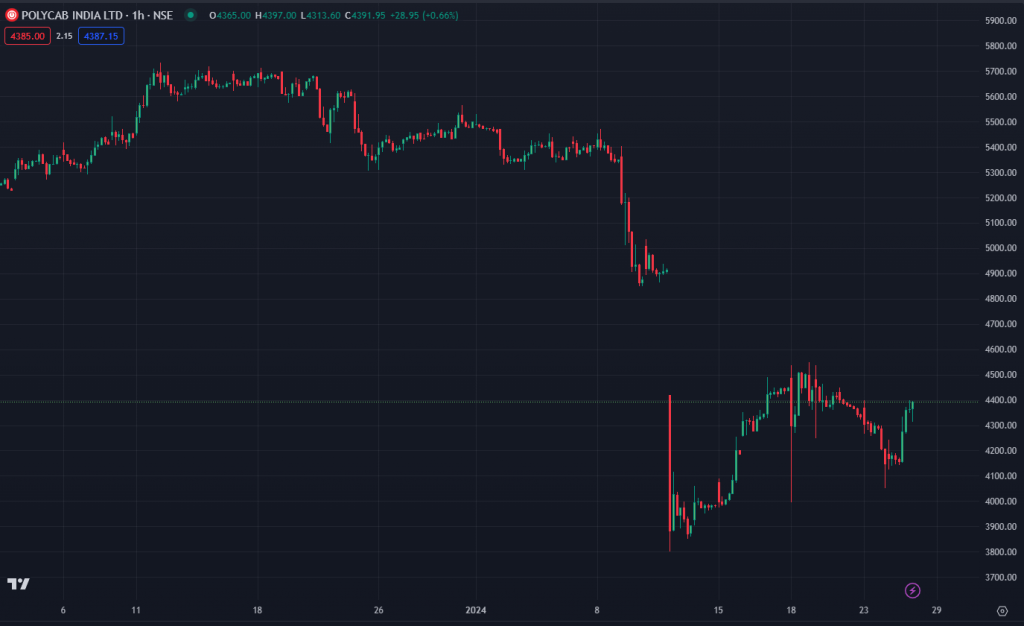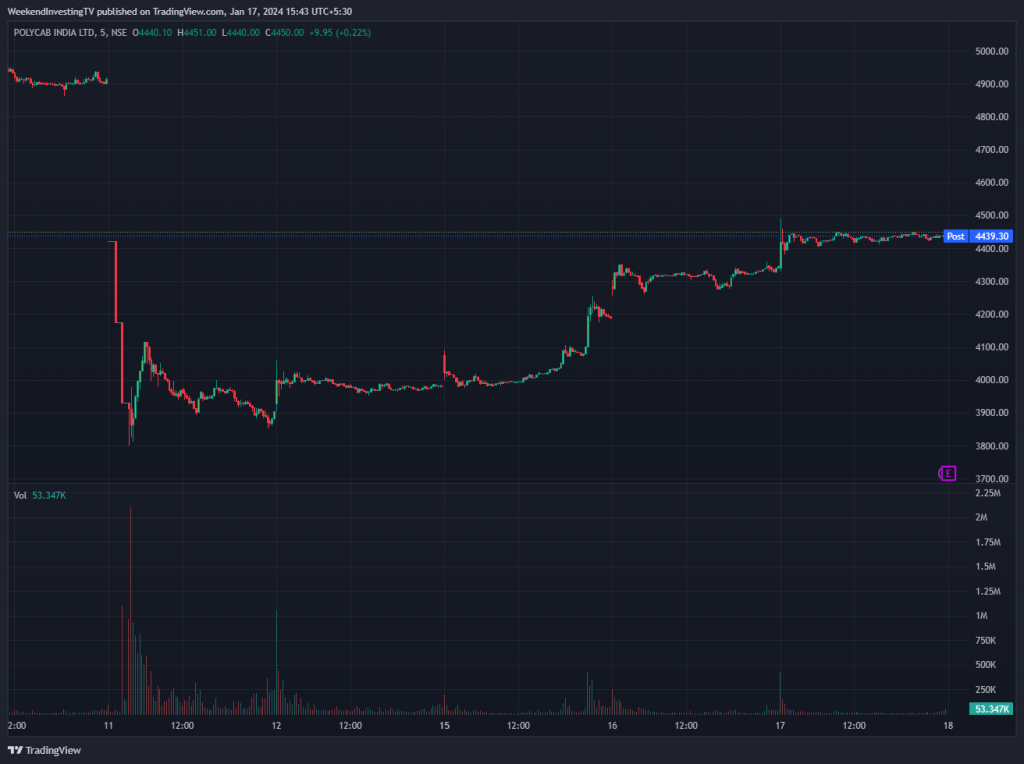In the fast-paced world of stock markets, it is essential to keep a level head and avoid knee-jerk reactions to market fluctuations. The recent Polycab saga serves as a prime example of how panic selling can lead to significant losses for investors. In this article, we will delve into the details of the Polycab case and discuss the lessons we can learn from it.
The Polycab saga began with allegations of cash sales and corporate governance issues surrounding the company. While no formal notices were received, the market reacted swiftly and beat down the stock on the first day. This initial drop triggered panic among many fund managers, causing them to sell their shares the following morning, resulting in a massive 20% decline.
To gain a better understanding of the timeline of events, let’s examine the charts.

On January 10th, the market showed stability, with the stock trading at around 4900. However, the panic selling on the morning of the 11th led to a further drop to 3800. The stock seemed to have reached its lowest point.
Remarkably, just a week later, as of the 17th, the stock had already recovered from 3900 to 4400, indicating a promising rebound.

The Polycab saga highlights the damaging repercussions of panic selling. When investors panic and try to exit their positions, it often proves challenging to execute trades promptly. Even with concerted efforts, one can usually sell their stocks only when the circuit opens.
This phenomenon is not unique to Polycab; we saw a similar trend during the Adani saga. Therefore, it is imperative not to succumb to panic during circuit closures, as it can lead to missed opportunities or, worse, selling at the bottom of the market.
One crucial lesson from this saga is the importance of adhering to a non-discretionary investment strategy. Non-discretionary strategies involve following predefined rules and avoiding impulsive decision-making. These strategies rely on proven principles and hard data rather than subjective emotions. By implementing non-discretionary strategies, investors can minimize the risk of panic-induced sell-offs and navigate market volatility more effectively.
Surprisingly, during the Polycab saga, some managers with non-discretionary investment strategies abandoned their system and joined the panic selling frenzy. This unexpected behavior raises questions about the integrity of their strategies and their ability to withstand pressure during challenging times.
On the other hand, it is commendable to witness investors who remained steadfast in their non-discretionary strategies amidst the chaos. As a result, they were able to exit the market at a higher average price than those who panicked.
In times of panic, the allure of being the first to exit can be tempting. However, it is essential to recognize that, unless you possess exceptional skills, access to high-speed trading terminals, and a direct link to the exchange, successfully timing the market during a panic is highly unlikely. Instead of attempting such daring feats, it is wiser to remain patient and wait for normalcy to return.
One common misconception is that panic selling can protect investors from small losses. In reality, if an investor holds a 2-3% position in a stock that drops by 10%, the overall loss amounts to a mere 0.2%. Panicking over such negligible losses is unwarranted and can have more detrimental effects on investment performance.
In conclusion, the Polycab saga serves as a valuable lesson in maintaining composure in the face of market turbulence. Panic selling rarely leads to favorable outcomes, with investors often missing the opportunity to sell at a higher price. By utilizing non-discretionary investment strategies, one can mitigate the risks associated with panic and make more informed decisions based on objective factors.

If you have any questions, please write to support@weekendinvesting.com









